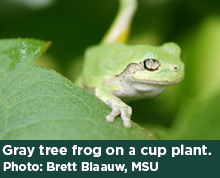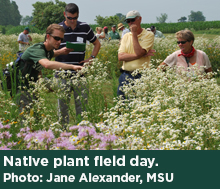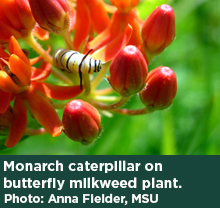Ecosystem Services
 Ecosystem services are the benefits that people obtain from the diversity of life around them.
Ecosystem services are the benefits that people obtain from the diversity of life around them.
- How do native plants provide ecosystem services? Supporting services, like those that form soil and cycle nutrients, provide the fundamental basis for all life on earth.
- Provisioning services include the food, fresh water, fuel, fiber and medicines we collect from natural and managed ecosystems.
- Regulating services help control floods, diseases, pests, and the climate, and provide for water purification and pollination.
- Finally, ecosystems link us together culturally, as we share in appreciating the beauty of the outdoors through recreation, education, and spiritual uses.
- Supporting. Plants form the critical base of food chains in nearly all ecosystems. Through photosynthesis, plants harvest the energy of the sun, providing both food and habitat for other organisms. For example, plants are fed upon by insects, which may be eaten by birds, which are in turn are eaten by birds of prey, and so on. In general, native plants support other native species more effectively than non-native plants.

- Provisioning. Many native plants can be harvested for food, animal feed, and fiber. For example, blueberries, cranberries and hazelnuts have traditionally been important foods for Native Americans and are commercially produced today. We also harvest native trees and shrubs for firewood, and to produce wood for building or pulp for paper products. Some people use native plants as medicines.
- Regulating. Native plants also contribute to regulating ecosystem functions such as flood control and climate regulation. For example, diverse native plant communities along waterways and roadsides slow water movement and can prevent flooding much more effectively than mown turf. Also, during photosynthesis, plants absorb carbon dioxide from the atmosphere, release the oxygen for us to breathe and store the carbon in their roots and stems, helping to regulate greenhouse gases.
- Cultural. Native plants are valuable to human cultures for recreational and spiritual uses. Historically, Native Americans used black ash to make baskets for both functional and ceremonial purposes. Today, many people especially appreciate a wooded park-like setting for camping, picnics and other family gatherings.
 Some make a special pilgrimage to their favorite woodlot each spring to see the wildflowers, or they grow particular native plants in their garden to support butterfly larvae or bees.
Some make a special pilgrimage to their favorite woodlot each spring to see the wildflowers, or they grow particular native plants in their garden to support butterfly larvae or bees.



 Print
Print Email
Email